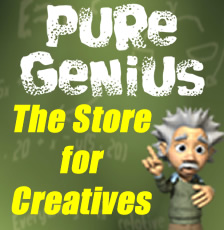Interview: ‘Virtual Revolution’ Writer/Director Guy-Roger Duvert Spills Real and VR Blood in His First Feature
(First published on Blogcritics.org)
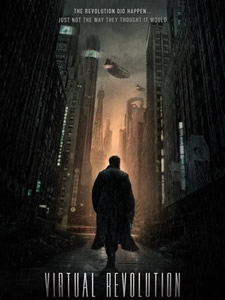 Virtual Revolution, a film by writer/director Guy-Roger Duvert, premiered at the Dances With Films Festival in Hollywood, June 4. It takes the audience to Paris in the year 2047 and puts them in the middle of a war, which spills over from reality to virtual worlds and back. Combatants could die in either one.
Virtual Revolution, a film by writer/director Guy-Roger Duvert, premiered at the Dances With Films Festival in Hollywood, June 4. It takes the audience to Paris in the year 2047 and puts them in the middle of a war, which spills over from reality to virtual worlds and back. Combatants could die in either one.
This future world is divided between the Connected, seventy-five percent of the population, who spend all their time online, and the Hybrids, who split their time between the real and online worlds.
This first feature directed by Duvert, who has a long history as a music composer for film and TV, evokes Blade Runner and The Matrix with a dash of Pacific Rim. (You’ll want to watch the trailer at the end of the interview.) If you are a video gamer or old-time Dungeon Master like me, the opening scene will delight you with its battle between classic FRP characters.
Nash, the protagonist, is a private eye who works for a big corporation. He is played with intensity by Mike Dopud (SGU Stargate Universe), who reminded me of a mash-up of Harrison Ford and Kevin Costner, but with a much better build, doubtlessly due to his history as a professional football and hockey player.
Nash, a Hybrid, must maneuver through a minefield of intertwining intrigues between his employer, the government, and a group of rebels who have hacked the gaming system to allow them to kill people who are in virtual reality. His mission is to find and kill the rebels.
The film raises questions about personal freedom and the nature of reality.
Last year, Duvert made a splash with a short film, Cassandra, that is still collecting awards on the festival circuit. I was curious how much this helped him with his first feature.
I know many people making short films. Was it the success of Cassandra that allowed you to finance this larger project?
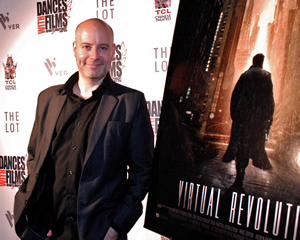
Writer/director Guy-Roger Duvert premiered his first feature at the Dances With Films Festival in Hollywood, June 4
Unfortunately no. The success of Cassandra didn’t help in financing the feature. That was my plan, though. Making an impressive short demonstrated that with a limited budget I could deliver very high production value. Cassandra was noticed. We got selected in 103 festivals and received 57 awards, but that didn’t bring us any financing. Basically, people consider that by doing a short, you haven’t proved your capacity to make a feature. That being said, I don’t regret it, as it was a way for me to test many things I would use in the feature. To say things differently, before Cassandra, I was not ready to shoot a feature and I knew it. So, making Cassandra was an absolute necessity for me, on so many levels. Also, I started building my team there. Ninety percent of the people working on Cassandra ended up on Virtual Revolution, too.
How much did it ultimately cost and how besides the Indiegogo campaign did you finance it?
The budget is around $1.5 to $2 million. The Indiegogo campaign got us only $24.000. So, basically, crowdfunding didn’t work for us. But, I don’t regret the Indiegogo experience. I started in the business as a film music composer, and I got lucky a few years ago, by getting some very nice contracts. I put all that money in it, I took loans, and I found what was missing among family and friends who trusted me enough to invest in the film. That means that zero percent of the financing came from the industry itself. Hard to be more indie than that!
Thirty days of shooting time was fast. How long did it take in post? Was any of the GGI done ahead of time?
Some people told me that I should have saved money by shooting even faster! But, I agree with you, it was fast. Ideally, I would have wanted one more week. Post production took us seven months, which is pretty fast, too. We had great teams working on the film. That helped a lot. A few shots were started before the shooting, by some freelancers. The idea was to use these shots in our crowdfunding campaign, in order to prove we were going towards to right direction. These shots have been modified since then, but they are in the film.
From the previews, the sets look mostly real. How much green screen did you use?
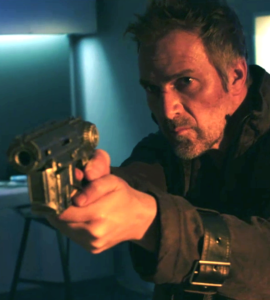
Mike Dopud stars as private detective Nash in ‘Virtual Revolution’
You’re right, the sets are real! It was fun, the first time I showed our first teaser. Some people were impressed by the ‘CGI created environments’ that, in fact, were real sets! Before the shooting, people were asking me all the time in which studio I would be filming, assuming that most of the film would be shot in front of green screens. The reality is very different. Out of the 30 days of shooting, we shot only one day in a green screen studio. We added some CGI to them, but the sets were real locations. We spent a lot of time in the preparation to find the places. It took us six months to find them all.
What are your distribution plans for the film?
The objectives are typical — to have the movie seen, and to have it profitable, so our investors can follow us for the next project. With that in mind, there are several possibilities. The main one is a normal theatrical-TV-DVD-VOD release. But, we’re not closed to other kinds of possibilities, like becoming an exclusive VOD for one of the big platforms like Netflix, Amazon, or Hulu. The fact that the feature could be easily adapted into a TV Show makes this idea potentially interesting. In the end, this will really depend on the offers we get.
What advice do you have for people trying to make the jump from shorts to features?
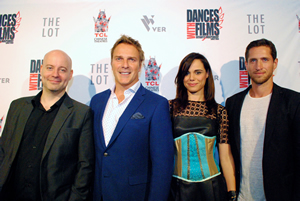
Director Guy-Roger Duvert with cast members Mike Dopud, Melissa Mars and Emilien de Falco
My advice would be to do what everyone says you shouldn’t: put all your money in, find financing in your personal network, and produce your first feature by yourself. I have many talented director friends. They can be divided into two categories. One group has a project for their first feature, with a more or less established producer, but it gets postponed all the time, and they eventually never do it. The other group ends up producing their own feature, and, after that, they get recognition and opportunities. So, I guess that in order to make a feature, you need to have done a feature already.

